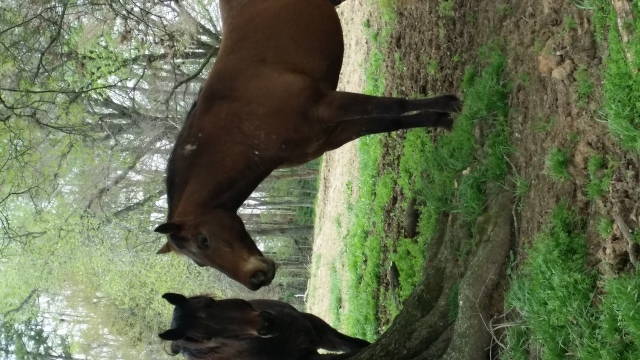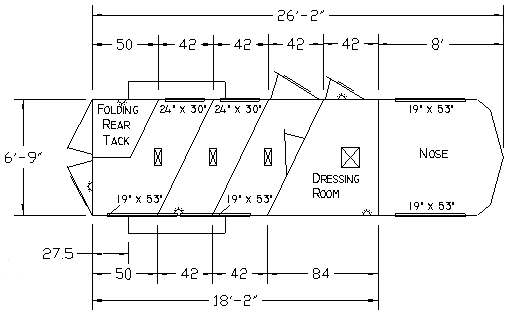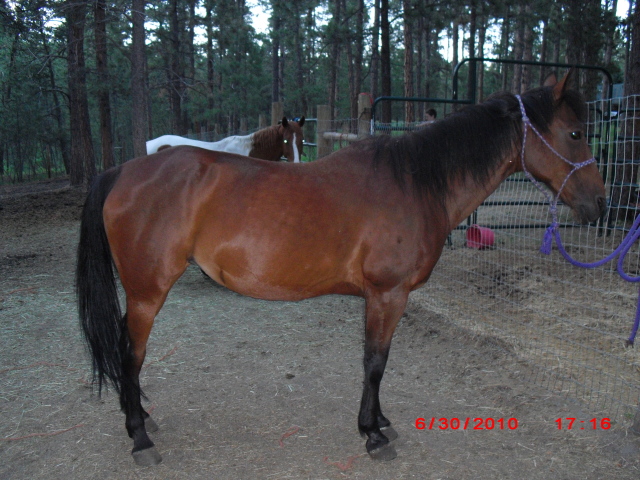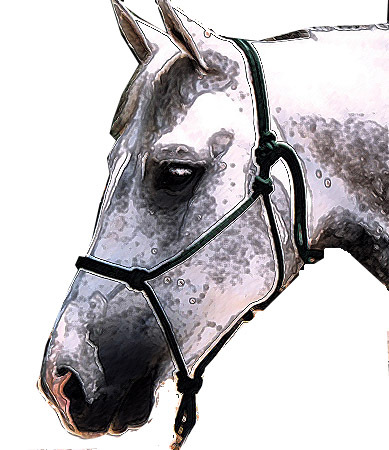QuestionThank you. If he is standing still, which he does on some occasions but not that often, and mostly in a one-on-one situation, do I say 'stand' to reinforce it and then reward him? Maybe he won't associate the two together and I should just be quiet if he's already still. Thank you for your time.
-------------------------------------------
The text above is a follow-up to ...
-----Question-----
Hi, I have two questions. 1) I picked up a 12 yr old QH cross gelding mid-August. He's a nice guy to me, we are working on bonding, but tends to 'herd', if that's the word, my 17 yr old gelding. I can tell he steers clear of the 12 yr old, even if the 12 yr old isn't being agressive. Does the one-on-one cause this? He was in a crowded paddock and now has full grass pasture. I'm concerned my other horse will start stressing even though he has a 'big heart'. Is there anything that can be done or is this herd dynamics? 2) The next issue is the 12yr old doesn't stand still. He follows and ties with no problem but moves around too much when tied if something gets his attention like if we are at a park and others are around. How do I train him to hold still? Thank you for your help.
-----Answer-----
Mary Beth,
OK. On the first question, yes, this is herd behavior. You didn't say how long they have been together but given time this will work out. Right now your 17 yr. old is leary of the younger horse. They will settle in together.
On the second question, this just takes a lot of time and patience. When he moves, put him back where he was and tell him to "stand". He has to learn what this word means so it takes a while. Just keep putting him back where he was each time and tell him to stand. I usually shake the shank a little too to emphasize what I am saying and get their attention on me. Horses suffer "ADD" (Attention Deficit Disorder in people) if you will, and some are worse than others. Remember, over millions of years of evolution they learned to pay attention to everything as a matter of survival. So you have to work with that. He may never be perfect but he will improve with time and patience.
Lyn
AnswerMary Beth,
Whenever you want him to stand, as soon as you have him where you want him that's when you tell him to "stand". A good patting and some "Good Boy's" are appropriate if he stands when you ask the first time. Then you just go on and do whatever you were going to do. After that you only do anything if he moves.
He needs to learn the meaning of the word "stand" just like he had to learn what "whoa" meant. It's the same thing whether you are alone with him or there are other people/horses/activities going on.
When I am first starting I put the horse where I want it, sort of shaking it's head with the halter/reins/lead/whatever to make sure that I have the horse's attention focused on me. It's a pattern you want the horse to respond to 100% of the time so you have to cue it 100% of the time when teaching them.
I always tell my horses to stand, whether I am riding them, driving them or have them in hand every time I stop and want them to stand there quietly. Everyone is amazed at how well my horses stand for mounting and otherwise. It's because I reinforce the command every single time. I simply expect them to do it so they do.
This kind of training takes patience and you have to remember to do it all the time. It's habit with me now and I do it without thinking about it.
Lyn

 my horses neck looks swollen
Question
horse on right
My horse has been at ano
my horses neck looks swollen
Question
horse on right
My horse has been at ano
 characteristics of a horse float
QuestionQUESTION: hello madam, can you please get me th
characteristics of a horse float
QuestionQUESTION: hello madam, can you please get me th
 orphan foal
Question
Angel
hi, i recently aquired an orphaned foal
orphan foal
Question
Angel
hi, i recently aquired an orphaned foal
 Mystery Mare
Question
Bay Mare
Hi there, I was curious if you could
Mystery Mare
Question
Bay Mare
Hi there, I was curious if you could
 training an older arabian
QuestionHi i have an 8 year old arabian who has been un
training an older arabian
QuestionHi i have an 8 year old arabian who has been un